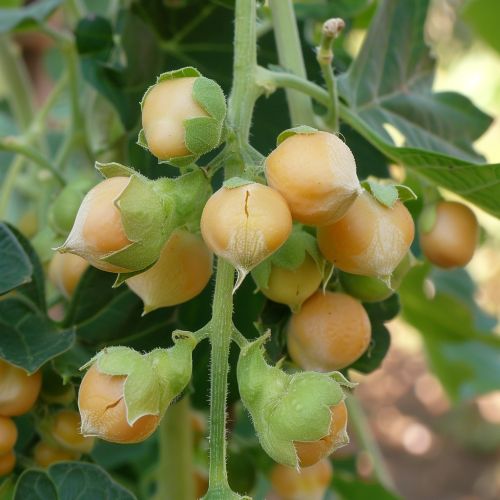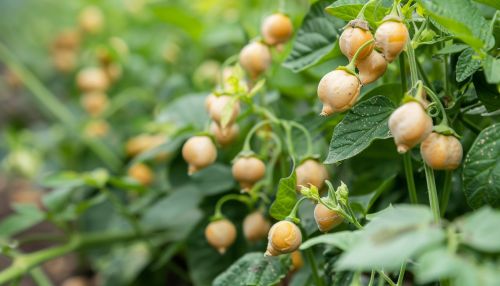Cicer arietinum
Introduction
Cicer arietinum, commonly known as chickpea or garbanzo bean, is a legume of the family Fabaceae. It is one of the earliest cultivated legumes and remains a staple food in many parts of the world. This article delves into the botanical characteristics, cultivation practices, nutritional value, economic importance, and various uses of Cicer arietinum.
Botanical Characteristics
Cicer arietinum is an annual plant that grows to a height of 20-50 cm. The plant has a branching, bushy habit with pinnate leaves. Each leaf comprises 11-15 pairs of small, ovate leaflets. The flowers are typically white, pink, or purple and are self-pollinating.
Root System
The root system of Cicer arietinum is deep and well-developed, enabling the plant to access water from deeper soil layers. This characteristic makes it drought-tolerant and suitable for arid and semi-arid regions.
Seed Pods
The seed pods are small, measuring 2-3 cm in length, and contain one or two seeds. The seeds are round to irregular in shape and vary in color from light beige to dark brown.


Cultivation Practices
Cicer arietinum is cultivated in various agro-climatic zones, ranging from temperate to tropical regions. The primary producers are India, Australia, and Turkey.
Soil Requirements
Chickpeas prefer well-drained, loamy soils with a pH range of 6.0 to 9.0. They are sensitive to waterlogging, which can lead to root rot and other fungal diseases.
Sowing and Harvesting
Sowing is typically done at the onset of the rainy season. Seeds are sown at a depth of 5-8 cm with a spacing of 30-45 cm between rows. Harvesting occurs when the pods turn yellow and dry, usually 90-120 days after sowing.
Pest and Disease Management
Common pests include the pod borer (Helicoverpa armigera) and aphids. Diseases such as Ascochyta blight and Fusarium wilt can significantly impact yield. Integrated pest management (IPM) strategies, including crop rotation and the use of resistant varieties, are recommended.
Nutritional Value
Chickpeas are a rich source of protein, dietary fiber, vitamins, and minerals. They contain approximately 20% protein, making them an essential component of vegetarian and vegan diets.
Macronutrients
Chickpeas provide a balanced profile of carbohydrates, proteins, and fats. They are particularly high in complex carbohydrates and dietary fiber, which aid in digestion and provide sustained energy.
Micronutrients
Chickpeas are rich in essential vitamins and minerals, including folate, iron, magnesium, and phosphorus. They also contain significant amounts of antioxidants, which help in reducing oxidative stress.
Economic Importance
Cicer arietinum plays a crucial role in the agricultural economy of many countries. It is a major export commodity and contributes to food security and rural livelihoods.
Global Production
India is the largest producer and consumer of chickpeas, accounting for approximately 70% of global production. Other significant producers include Australia, Turkey, and Pakistan.
Market Trends
The global demand for chickpeas has been increasing due to their nutritional benefits and versatility in culinary applications. The rise in plant-based diets has also contributed to the growing market.
Uses
Chickpeas are used in various culinary traditions around the world. They can be consumed fresh, dried, or processed into flour and other products.
Culinary Uses
In Middle Eastern cuisine, chickpeas are a key ingredient in dishes such as hummus and falafel. In Indian cuisine, they are used in curries, salads, and snacks. Chickpea flour, known as besan, is used in a variety of recipes, including pakoras and sweets.
Industrial Uses
Chickpeas are also used in the production of animal feed and as a raw material in the food processing industry. Chickpea protein isolates are increasingly being used in the formulation of plant-based meat alternatives.
